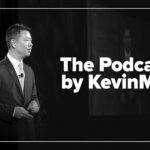Imagine seeing a commercial featuring Ryder and Marshall from the popular kids’ cartoon Paw Patrol lighting up cigarettes and enjoying a smoke together. It’s hard to fathom that happening, but in 1961 beloved cartoon characters Fred Flintstone and Barney Rubble happily smoked cigarettes in an ad for Winston. Most children of that era could easily recite the ad slogan: “Winston tastes good like a cigarette should.”
With that sort of youth targeting, the meteoric rise of youth smoking from the 1970s through the 1990s is not surprising. Millions of these young Americans would go on to die directly due to their cigarette use. Fortunately, we learned our lesson and stopped the tobacco industry from targeting youth. Unfortunately, it was a lesson we soon forgot.
Now, imagine a preschooler seeing a billboard or social media post of Santa Claus smoking a joint with the tagline “Santa knows where to get his dopest gifts – happy holiblaze.” Or a teenager walking to school today and seeing a billboard with a 10-foot cannabis leaf image on it and the cheeky tagline, “I like big buds and I cannot lie.”
You don’t need to imagine it, of course, because youth-targeted cannabis ads are common in states that have legalized cannabis. Why? Because cannabis dispensaries and brands have few restrictions to abide by. These legal cannabis companies and dispensaries have certainly done their homework. They use tactics from the tried-and-true playbook of tobacco companies to target young users — and hook them for life.
The product is different; the tactics are not.
We should be more outraged by this! We know the very serious risks of smoking. It is against the law for tobacco companies to advertise on TV or billboards, use cartoons, or sponsor sporting events. Somehow, cannabis companies are allowed to do those things in most of the states where it is legal.
Twenty-four states and Washington, D.C. have legalized cannabis for recreational use for those aged 21 and older. Every year more state bills and voter initiatives are brought forth to legalize cannabis. If this is the route the U.S. is taking, we cannot disregard the important lessons of the past.
Some people may shrug at this and feel it’s an inflated concern. Perhaps they don’t see the links to the past or they don’t realize the potential harm.
Proponents may point to the defense that cannabis is a different, less harmful substance than cigarettes.
Let’s look at this argument. Smoking any substance releases large amounts of tar, toxins, and carcinogens, which all damage sensitive lung tissue. This damage increases the risk of cancer and chronic obstructive pulmonary disease. Particularly for youth, there is mounting research that shows cannabis can interfere with memory, attention, and problem-solving abilities in the developing adolescent brain. These learning impairments are associated with negative social outcomes, such as decreased high school completion.
There is strong evidence also correlating early cannabis use to increased rates of negative mental health issues. Those with underlying mood disorders have an increased risk of suicidality and psychosis. Additionally, while cannabis may not have the same type of physical addiction pattern that tobacco has, addiction to cannabis does occur and the risk is well-established.
We may be able to attribute these effects occurring more frequently to the exponential rise of THC levels in cannabis. Cannabis used in the 1960s and ’70s had THC levels of 3 to 5 percent, producing a mild euphoria. Now, with cannabis plants being specifically cultivated to produce 30 percent THC levels and extraction processes to deliver resins that are essentially 100 percent pure THC, these detrimental health implications are not a surprise.
Another specious argument that has been used against the efforts to limit cannabis advertising is that marketing doesn’t affect youth use. Ongoing research is showing something different. A 2017 CDC-sponsored study that polled high school students on their substance use behaviors found 52 percent reported exposure to cannabis advertising from the internet, 32 percent from television, and 16 percent from billboards. Adolescents who reported exposure from one mode of advertising had a 60 percent increased likelihood of being current cannabis users.
We, in the medical field, should demand that our state legislators protect children from stepping into a new smoking epidemic. If we fail to, we can’t be surprised if millions of young Americans go on to habitually smoke cannabis and suffer the same health consequences that youth from the 1970s to 1990s did with cigarettes.
Gary Kirkilas is a pediatrician.



















![Catching type 1 diabetes before it becomes life-threatening [PODCAST]](https://kevinmd.com/wp-content/uploads/Design-2-190x100.jpg)


